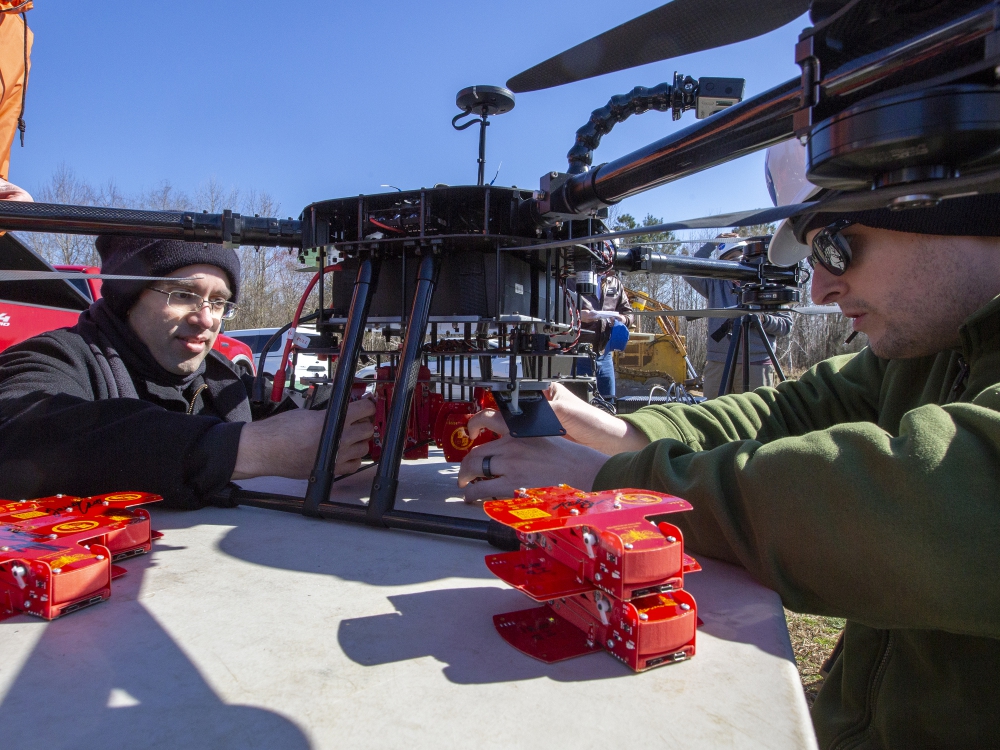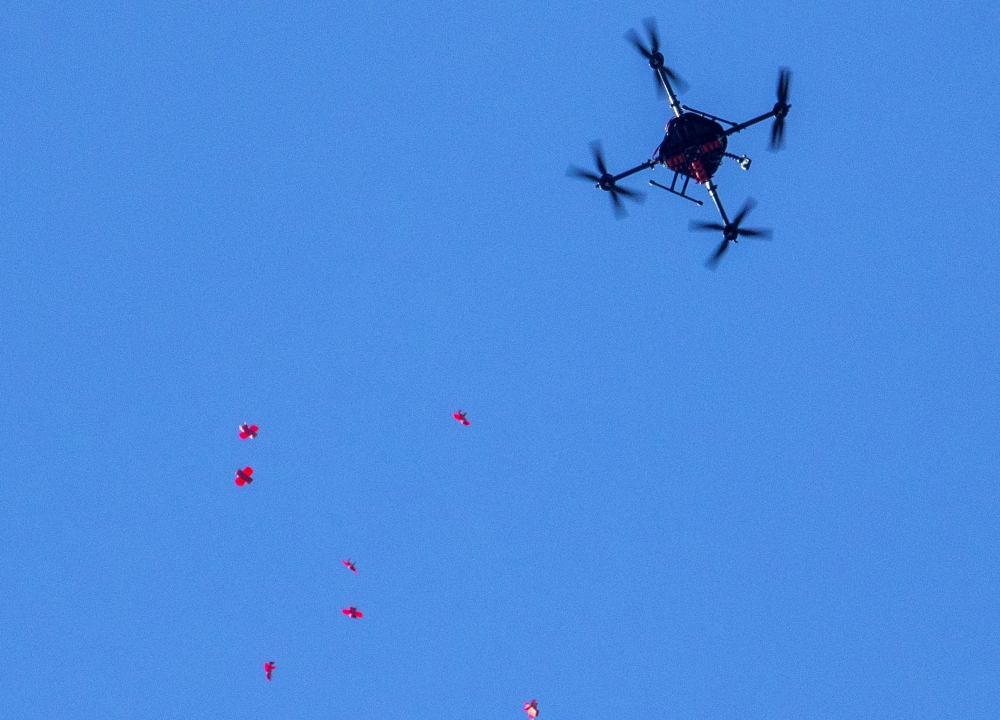More than 100 drones rained down in a spinning swarm over Beaver Dam Airpark, Virginia, March 19, 2019, as NASA researchers tested new autonomous data collectors. The test flight consisted of four larger unmanned aerial vehicles, nicknamed Hives, which are loaded pre-flight with more than 20 smaller drones.
These smaller drones made by the Navy Research Lab are Close-In Covert Autonomous Disposable Aircraft, or CICADAs, and resemble tiny airplanes that fit in your hand.
The objective here is for the four Hives to reach their target height of 1200 feet in a square formation,” said Jim Neilan, remote pilot. “Once the Hives are in position, we release the CICADAs with a mechanical switch. The CICADAs then free-fall as they get their bearings, then begin to fall in a spiral pattern around a set waypoint.”
The CICADAs are able to maneuver themselves using global positioning system, inertial measurement unit and flaps on each wing.
“At the start of their free-fall, the CICADAs are tracking their location, their movement and where they need to go,” said Matthew Vaughan a software engineer and the payload specialist for the Hives. “They accomplish auto-correction in the first 500 feet and then begin to glide to the waypoint, collecting data as they fall.”
“The goal is for meteorologists to be able to use a system like this to get the most accurate reading possible by dropping them straight through a cloud or storm system,” said Neilan. “The information hundreds of drones could send back in real-time could prove highly beneficial to Earth Science.”
High in the sky, the Hives became little more than black dots as they reached their target height and locked into a square formation. With a flick of a switch 112 CICADAs began their descent. After a short wait, the slight sound of falling objects began to rain around the field’s waypoint marker.

NASA software engineer, Matthew Vaughan (left), and a fellow researcher prepare the payload of Close-In Covert Autonomous Disposable Aircraft, or CICADAS, for the Hives.
Cicadas are famous for their loud seasonal calls that many associate with summertime. These CICADAs, however, are not loud like their namesake.
“They’re silent during their glide, but once they’re on the ground they can move their flaps to make a quiet chirping sound to help locate them a bit easier,” said Vaughan.
With the CICADAs recovered, the drop was a success.
“Now we take the data from the CICADAs and see where that leads us,” Vaughan added.
Photos: NASA/David C. Bowman
Source: Press Release

